 |
 |
 |
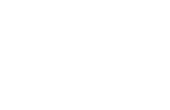
|
Fredrik Nielsen, Isveç / Sweden
Ferrari Otoboyali Testi / Ferrari Carpaint Pitcher 2011
Üfleme cam / Blown glass
|
|
 |
CONTEMPORARY NORDIC GLASS ART
-Aurora
|

|
Posted 4 March 2014
|
Share this:
|
|
AURORA: CONTEMPORARY NORDIC GLASS ART
15/2/2014-20/4/2014
By: Mats Jansson Curator
In written observations from the 16th century, which travellers from the east made during their travels in the Nordic countries, we often read of the contrast between the artistic knowledge in their rich distant homelands and the works of art which the travellers found in the poor and barren north. In these countries they came across nothing which compared to the dazzling works of art in their homelands and no artists who created trends or who were inspired by particular artistic subjects. The artworks that the travellers came across in the north instead, got their sense of form from the forests, meadows, and lakes. It is only thanks to Mother Nature that the poor barbarians in the north are able create any object of beauty.
It is perhaps here where the myth of nature’s strong influence on the Nordic form of expression is based. The myth has in any case been well preserved and has been accurate in describing what is specific and distinctive in the Nordic sense of form. Another cherished myth is that Swedish poverty was instrumental in creating a form tradition that is not extravagant or excessive but is rather characterised by austerity which can be positively interpreted as elegance. Nowadays however, traditional forms are hardly passed from generation to generation as they were then, through ardent hand work by the crackling fire on dark winter evenings. Today it is rather a question of the acquirement of advanced knowledge at university level, in a big city environment with specialised studies over the course of several years. Strong personal expression is portrayed in a language which bears the mark of extensive knowledge of materials and high levels of skill. How the material is used varies greatly between the more traditional and the newer possibilities which industrial development can offer. One may decide for oneself whether or not these myths ring true, but these are two approaches often highlighted in various contexts that work well as a starting point for one’s own contemplation.
|
|
|
|
|
|
|
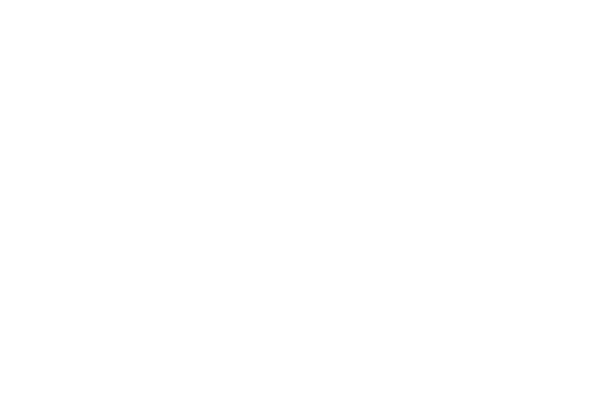
Bertil Vallien, Isveç / Sweden
Siyah Kivrim / Black Bender, 2013
Kuma döküm cam / Sand cast glas
|
|
|
|
|
|
|
It is very exciting, with this background, to present a contemporary Nordic glass art exhibition at the gateway to the east, where long ago the art of creating glass was discovered and developed. It was from here that the knowledge of glass making spread across Europe to the Nordic countries. The intention of this exhibition has been to try and give a broad progress report from the contemporary Nordic glass art scene. The choice of the artists presented is based on the various approaches and new directions within today’s artistic expression in the Nordic lands and, as a whole, the exhibition endeavours to show the multifaceted and boundary breaking artistic work, which is being created in a time of rapid transformation. The abrupt shifts and the variation, which the Nordic glass art scene of today is noted for creates a rich and vigorous climate, but the scope and breadth can at the same time make it difficult for an international public to orientate itself. Many of the artists in the exhibition are also active around the world and for many, the international glass art scene has become as familiar as the national. Yet there is still a common thread that runs through the Nordic art landscape and I would like to suggest that the characteristic sign is an explosion of creativity and exploration. Whichever subject or expression the artists of this exhibition are drawn to, it is one way or another marked by thorough examination. Artists like Bertil Vallien and Oiva Toikka are typical representatives of the glass artists who in such a way and early in their careers broadened the scope of the Nordic and international art scene. They and a handful of other Nordic glass artists broke new ground and they brought in a new dimension in the art of glass making. Nordic glass art has long had a strong position in Europe. High quality material and unique design are two well-known characteristics. During the past decade we have seen many artists leave the larger glass works and start their own furnaces where they are able to work completely freely and where they can unhindered dare to try bold new expressions. Glass art is also becoming more and more involved in the present by asking questions that cause us to reflect. And maybe the future for the continuation of the Nordic glass miracle lies in the leap from traditionally bound glasswork and in the close cooperation between a few people in the smaller furnaces.
With this meeting in Istanbul, we would like to create an exhibition which can touch and engage the public on many levels. We would like to highlight different artistic points of departure where tradition gives a new interpretation of the present and vice versa. I would like to warmly thank all individuals and institutions who have contributed to making this exhibition possible and notably to Pera Museum, M. Özalp Birol, General Manager of the Suna and Inan Kiraç Foundation, Culture and Arts Enterprises and the project managers Begüm Akkoyunlu Ersöz and Tania Bahar for an excellent collaboration. And last but not least, I thank all the artists who contributed to the exhibition and allowed their works to travel on the long trip through Europe to Istanbul and to the Pera Museum.
|
|

|

|

|
PARADIGM SHIFT FOR NORDIC GLASS: EXPERIMENTATION, SCRUTINY AND REDEFINITION DURING THE GLASS INDUSTRY’S PERIOD OF TRANSFORMATION
By Maja Heuer, Museum Director
The Glass Factory
At the turn of this century developments within the glass industry and in the artistic creation and manufacture of glass lead, during the 2010s, to a paradigm shift for Nordic glass. During the 2000s the industry found itself in a state of crisis, particularly in Sweden and in Finland. The reasons behind this were varied: marketing and production was globalised; consumption patterns changed; and new materials were introduced to the market. Other factors included the international energy crisis and increasing production and labour costs. Similar developments occurred in Eastern Europe, in Poland, The Czech Republic, Slovakia and Hungary, and following the financial crisis of 2008 many large and small Nordic glass works were closed. Sweden was especially hard hit by this development and several of the glass works belonging to the Orrefors Kosta Boda trademark were closed, including those at Orrefors, Boda and Åfors. The glass industry was on the brink of transformation.
|
|
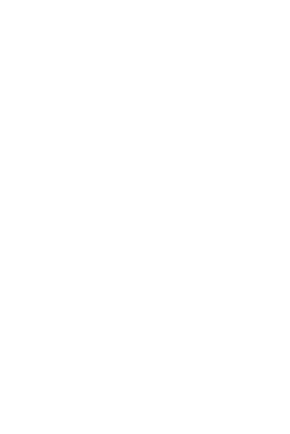
Markku Salo, Finlandiya / Finland Yildizlar, Yildizlar / Stars, Stars
2011, Cam, metal ve karrisk cam teknikleri
Glass, metal, and mixed glass techniques
Fotograf / Photo: Muotohuone Oy
|
|
|

|

|

|

|

|
|
|
Ulrica Hydman-Vallien, Isveç / Sweden Yuva (Hayatin Baslangici ve Sonu) Gravür, altin ve emay boya ile serbest üfleme cam yumurtalar
The Nest (Beginning and End of Life), 2013
Free blown glass eggs, engraved, gold painted and enamel painted
|
|
|
|
|
Pipaluk Lake, Danimarka / Denmark Çerçeve II / Framework II 2011
Kalipla sekillendirme, çelik çerçeve Kiln formed (slumped) sheet glass suspended in steel frame
|
|
|
|
|
Kari Håkansson, Norveç / Norway Serap / Mirage 2012,
Üfleme ve soguk ?sekillendirme, Blown and coldworked glass
Fotograf / Photo: Morten Brun
|
|
|
|
|
|
At the same time that the industry was facing perhaps its most difficult crisis, Nordic glass studios and the individual practitioners were becoming more productive. In the absence of their own specialised forum, artists who were no longer employed in the industry by the end of the 1990s began to form their own associations. For example, the Swedish Glasakademin was formed during the year 2000 and was made up of members who were largely independent of the activities of the larger glass factories. During the same period the number of artists working with glass in Nordic countries multiplied and they began exploring techniques, which had previously been unusual, like casting and lampworking.
From the turn of the century glass artists increasingly began to move away from functional vessels and began working with installations, sculpture, performance with glass as a starting point, and conceptual work. One example is Åsa Jungnelius who uses glass as a purveyor of symbolism and meaning in her work, in which, amongst other things, norms of genus, class, and aesthetic are illuminated and questioned. In Åsa Jungnelius’ work one discerns gender forms symbolised by the “hole” and the “pole”, the circle and the pyramid. Archetypes constructed and standardised by society recur like a running thread through Jungnelius’ creations in the form of amongst other things, lipstick, bargepoles, and the vagina.
Benjamin Slotterøy works with the de-familiarisation of glass in everyday contexts. In his work Precious Liquid and The Vacuum Cleaner Act, Slotterøy uses different everyday objects like water taps or a vacuum cleaner. As is a Kafka novel the object is transformed giving the viewer a new distance to the object, so one sees the otherwise familiar object or the actions one normally performs with it in a new light.
The changing conditions of the glass industry demanded a new way of thinking on all fronts: in education, productions, aesthetics and research, and the in Nordic countries new institutions and forums rose to meet these demands. In 2011 The Glass Factory, a centre and museum for glass, opened with one of Nordic countries’ biggest collections of art glass. The intention was to promote the new creative developments in the medium of glass through exhibitions, residencies, production in kilns and furnaces, seminars, EU and international projects, workshops, and other programmed activity together with national and international cooperative partners. The Glass Factory also cooperates with Konstfackskolan, the Art Academy, in Stockholm, which has amongst other things, developed a practical course in the artistic research of glass.
An important forum for glass in Norway is the glass centre S 12 – open access studio and gallery offering residencies for artists, exhibitions, workshops, seminars, courses, and an extensive amount of international cooperation.
In Denmark there are several important participators within the glass renaissance. One note-worthy forum is Glasmuseet Ebeltoft, which started in 1985 on the initiative of the studio artist Finn Lynggaard. The museum works largely with contemporary glass and has an extensive operation with many international exhibitions as well as workshops, seminars and other programs. In 2006 the museum was extended and this raised its status as a forum for contemporary artists and designers, and accelerated the renewal within the practice of glass. Another important institution in Denmark is Denmark’s Design School in Bornholm for ceramics and glass, which is part of the Royal Danish Academy of Fine Arts, a joint organiser of “European Glass Context”, one of Europe’s biggest glass attractions with exhibitions, workshops and international seminars. In Finland, many of the independent practitioners propel the development of contemporary glass forward. Finland’s glass museum in Riihimäki acts as an important forum for national and international participants within the field of contemporary glass and its development.
Parallel with the structural changes, there is also a change in perspective of how glass is formed in Nordic countries. The report “Making Value” which came out in England in 2010 showed that there were more practitioners than expected working in fields of research and science: in biotechnology, technique, the study of materials, and digital, and communication technology, which challenges the conventional norms, creates new perspectives on fine art, and generates innovation and growth.
During the same year, the artistic research school was set up at the Art Academy in Stockholm, which would provide a stimulating and productive context for artistic interdisciplinary research. Aalto University in Finland has also instigated interdisciplinary research. At the moment there are several interesting scientific projects within the area of artistic research involving glass, a phenomenon which is set to develop even further in Nordic countries during the coming years. Earlier artistic research at university level was also instrumental in the development of glass during the 2010s and a number of artist began experimenting with research, production processes, and materials.
Æsa Björk Thorsteinsdóttir’s collection Impressions is constructed with a scientific method using a custom built measuring instrument and examines the human form in glass, in this case her own body. Her examination of the negative form can almost be associated with the process of photography where precise measurements of length and distance etc. lay the foundation for the representation of various motifs.
At the same time that artists began focusing on research, a redefinition of glass as a material and its associated characteristics began. New perspectives of the changing conditions and properties of glass are for instance made visible in Pernille Braun’s Icon, where the historical Nordic tradition of transparency and clarity is examined, where the surface is always expected to be “clean” and “attractive” and where the pure mass of glass is portrayed as a norm. Pernille Braun’s work, stretches, breaks and deconstructs our historic norm of the expected boundaries between different materials and makes them inconsequential. Even in Bertil Vallien’s latest work in opaque black glass, the old parameters that defined the ways in which glass was made to behave are deconstructed. The expected glittery and shining qualities give way to more archaic, obsidian like, closed and sculptural properties of glass. Another example of this is Stine Bidstrup’s work Folds II.
Finnish Anu Penttinen’s work with its opaque, brightly coloured patterns also illustrates a renewal of our sense of glass as a material and how it is worked. With their ceramic like character and their various contrasting layers, her vases provide a new perspective to the use of glass in everyday contexts.
Another artist who works with the redefinition of material is Fredrik Nielsen, who presses the material beyond the historic norms of the manufacturing process. Layer upon layer of thick glass form sculptures of an unconventional cast, frozen body movements that challenge the rules of the last 500 years of industrial production.
Nordic glass now finds itself in a transformational period that is characterised by a strong vitality in its multitude of new creative expressions. With a shrinking glass industry as its point of departure, there is a shift of focus to new areas. Today’s output of Nordic glass is no longer based on the production of the old large scale establishments, rather it is the result of artistic experimentation within conceptual art, artistic research, and the new perspectives and redefinitions of the material properties of glass. While some artists like Ludvig Löfgren and Ulrica Hydman-Vallien are still connected to the industry, many others like Vidar Koksvik, Kari Håkonsen, Trine Drivsholm, Tanja Sæter, Susanne Jøker Johnsen, Vesa Varrela, Oiva Toikka, Markku Salo, Camilla Moberg, Hans Christian Berg, Pipaluk Lake, Ingrid Nord, Paul Grähs and Gunilla Kihlgren have their own studios. The future and conditions for the development of Nordic glass appear to lie beyond large scale industry, primarily with the individual artists themselves who at this moment are paving the way for glass’ profound change and renewal.
|
|

|

|

|
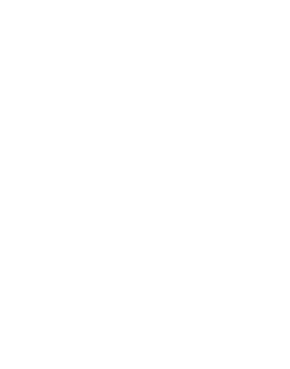
Peter Hermansson, Isveç / Sweden Cark Doktoru / The Cog Doctor 2013 Graal teknigi / Graal
Fotograf Photo: Mattias Johansson
|
|
The Happiness of Illuminating the Winter of 2014 with Northern Lights
By Suna, Inan, and Jpek Kirac
Having organised a variety of exhibitions focusing on different branches of art since its foundation, this time Pera Museum brings to art lovers a colourful and comprehensive exhibition showcasing some of the best examples of Nordic glass art.
In the exhibition Aurora: Contemporary Nordic Glass Art we find 51 works by 25 artists from Sweden, Norway, Finland, Denmark, and Iceland.
Nordic countries hold a special, leading place in contemporary glass art, due to their different use of glass design. The artists are in a continuous search; they produce art freely and on a wide scale, in a process that is variable, innovative, and global.
In this framework, we believe that the world class artists and their work showcased in the exhibition, at times forcing the limits of glass itself, will allow us to see a fresh relationship between glass, craft, and contemporary art.
We would like to take this opportunity to thank the talented artists who have participated in the exhibition; Sweden’s Nääs Konsthantverk, the Institution’s director and the exhibition curator Mats Jansson; Vesa Varrela from Finland, Benjamin Slotterøy from Norway, and Susanne Jøker Johnsen from Denmark for their dedicated work in the selection committee; the Suna and Inan Kiraç Foundation Pera Museum team; the Consulate General of Sweden in Istanbul, and all the individuals and institutions who have contributed to the realization of this exhibition.
|
|
|
|
|

|

|

|
NORDIC GLASS: A MULTIFACETED “WAYWARD SEARCHING”
By Bo Borg, Art historian and critic, member of AICA
The exhibition, Aurora, Contemporary Nordic Glass Art, is an extemporary example of the best expressions present in Nordic glass art today, even if no exhibition can claim to be completely comprehensive. The choice of work was selected by a group of active experts under the curatorship of Mats Jansson, Sweden. Alongside Jansson, the selection committee included Vesa Varrela from Finland, Benjamin Slotterøy from Norway and Susanne Jøker Johnsen from Denmark.
Within the framework of presenting a broad picture of contemporary Nordic glass art, the exhibition has been curated to show a rich and varied body of work from artists who are all searching new paths in attitude, theory, use of material, expression, and concept. A common feature for the artists present in this exhibition is the desire to go their own way, resulting in no pervading styles or dominant trends. The concept behind this exhibition hasn’t been to find national or regional characteristics either. Even if it had been, one can only come to the conclusion that these simply don’t exist.
From one perspective one could say that the exhibition shows an ongoing liberation from, and in some cases a critique of, the pure and cool Nordic modernism, with its ideal of simplified form and balance, purity, and harmony as its foremost principals. Nevertheless, one can also find some examples that continue in the modernist tradition.
A main trend that can be discerned from the exhibition is how artists increasingly leave functionality behind them. However, the material itself is problematized. Some, for example, work with black glass, which with its opaque darkness confounds many of the typical expectations we have of glass, resulting in the artists finding other, completely new expressions. The technical experiments with the material are numerous and very personal. It often happens that the glass must abandon its own intrinsic value and functions, and adjust to and be subjugated by the artistic idea at play.
A glass artist is of course deeply anchored in the materiality of glass and its properties. The exhibition shows many examples of how glass is mixed, and in some cases almost alloyed with other materials. Expression and what one wants to portray is prioritised ahead of the fundamental traditions of glass. The classical technical perfection has in certain cases given way to particularly strong expressions and a desire to search amongst the new and untried. Many look for their expression away from the decorative in order to study the innate possibilities of the material, a search that can be described as artistic.
Above all the exhibition shows glass work that should no longer be seen as a craft. It is a contemporary art form which is imbued with the power of the special qualities of the material. Artists rip away the boundaries and hierarchy between art, craft, and design.
There is a tendency for artists to direct attention to the most important questions facing humanity today, existential questions, which cover an entire spectrum from politics to poetry. The exhibition demonstrates that Nordic glass art is connected to society’s other activities, such as reappraisal, research, and debate. Social questions align with the aesthetic. Here we see work which connects to gender discussion, environmental debate, and street-art attitude to name just a few. There is no longer any order of rank among the different motifs. A mobile phone number in neon can hold an equally powerful place within a Nordic contemporary glass art exhibition, as naturally as graceful long-necked vases. Many of the artists work with concepts that have a clear theoretic statement, others test the definition of art itself.
We don’t see these new expressions as being especially Nordic. By allowing the exhibition to meet visitors in other countries we broaden the vision and a dialogue begins, creating a further deepening of the artistic consciousness.
One thing is certain: these artists have come a long way from the old Nordic functionalist ideal. From having had strict understandings of taste and functional norms, Nordic glass has been deregulated. The exhibition shows the eagerness amongst the leading Nordic glass artists to be a part of the international art scene. We see clearly how glass is being given new functions; functions of the soul rather than practical ones.
The range of choice in Nordic glass illustrates its characteristic as an exuberant art form, which addresses contemporary phenomena and accepts the new challenges inherent in them, continuously testing the potential and boundaries of glass. There are many more examples than those given here. However, the exhibition, consisting of leading artists’ works will touch and engage the audience on many levels.
|
|
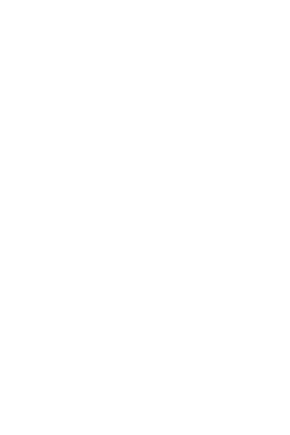
Oiva Toikka, Finlandiya / Finland Athos, Porthos, Aramis 2010 Döküm cam / Casting glass
Fotograf Photo: Håkan Ivarsson
|
|
|
|
|
|
|
|
|
|